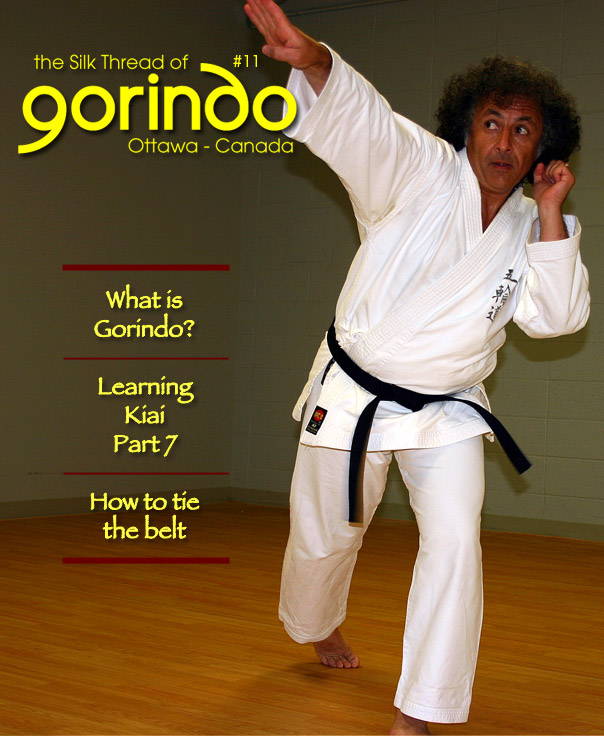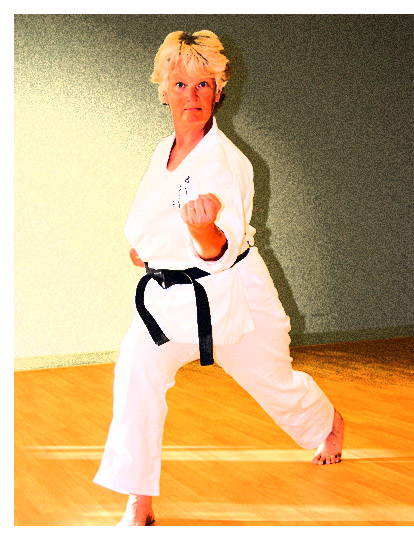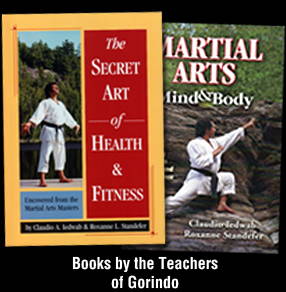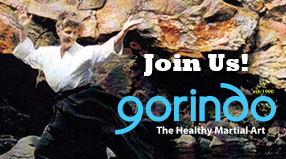
The Silk Thread of Gorindo - Ottawa - Canada
Issue 11
- How to Tie the Belt the Gorindo Way
Photo cover Claudio Iedwab sensei, August 2011, by Roxanne Standefer
The Learning Kiai (Part 7)
< read Part 6 (previous issue)
Working with others
It is important to learn to work with a partner to achieve a better performance. Since much of martial art technique involves the manipulation or avoidance of another, this may seem obvious, but it is quite different thing to practice against an opponent than to learn and practice with a partner in a cooperative way. There are two skills of the Learning Kiai that are acquired from working with another: sensitivity and observation. From the training point of view, it is vital for the student to be able to exercise a high degree of emotional and physical self-control in order to be able to practice safely. If a partner is injured during the course of training, then they will not be there the next day to work with you, and will no doubt feel differently about offering themselves as a human punching bag when they do return. Clearly, from a purely practical standpoint, this is ineffective.
 The body has limits
The body has limits
In grappling techniques, we learn that the body moves only in a finite number of ways. Joints lock at a certain angle, and cannot be forced past that point without pain and eventually, breakage. Every person has a different muscle mass, flexibility and pain tolerance that will affect which technique is best used for maximum effectiveness. The relationship of height, length of limb, and weight, will also be a factor in how specific techniques work. The difference in application of force can be very subtle and requires a refined tactile sensitivity to be able to perform the technique at all, and more importantly, to be able to practice it with a partner without damaging him or her.
Train with attention
Part of this sensitivity is being able to stay focused and alert in practice. This is critically important in order to respond swiftly to the safety tap of a partner indicating an immediate release of a technique. Mostly though, the sensitivity required to train safely comes from one’s own body awareness and concentration. ‘Knowing one’s own strength’ means paying attention to the details and staying in the moment. Daydreaming or showing-off is unacceptable in a martial arts class for this reason. This is why curriculum must be designed and executed in a way that ensures that the associated skills and qualities of character are developed alongside technique.
Learning how to sense what another will do is obviously very important in self-defense. Observing mannerisms, body language, breathing and eye movement will assist the martial artist in anticipating an attack. Practice in sparring or jiju kumite is an opportunity to learn patterns and indicators in how another person moves. Seeing them in a partner helps you practice your response both defensively and in counter attack, but also helps you to recognize them in yourself. Observing others is a key part of learning how to not ‘telegraph’ your intentions to an opponent. Avoiding mistakes and learning an economy of movement is the goal here, not proving yourself to be better than your partner.
Group awareness
Sparring is not the only area where this type of observational and sense awareness can be developed. Training in synchronized group kihon or kata, where everyone is trying to move in the same time and with the same energy, can be very beneficial to the sensitivity of the martial artist. There are obvious signal patterns, such as following the counting, and watching when the person in front of you moves. Less obvious are the intake of breath and the sound of the shifting of a foot on the floor that can assist the student in keeping in ‘step’ with the class. With a little understanding and practice, one can see how these details can be applied to self-defense situations. Eventually in the advanced student, the shift of the eye or the flaring of a nostril will be ‘felt’ rather than observed, and such data will be absorbed and integrated with previous experience to produce very fast reactions.
The Kiai of learning
A martial artist will come to understand that the path of martial art training is just as much about learning how to learn, learning how his mind and body connect, how he will feel about it all, and most importantly, knowledge about himself. On a fundamental level his or her spirit, motivations, responses and inspirations will be brought into play and be made available as resources. In the learning and improvement process, these elements can be altered, strengthened or eliminated depending on the needs of the situation and the training objectives of the individual. It can be very liberating to discover that changes in character can be made. It is true that goals or dreams that were previously thought impossible can be achieved with time and practice.
Excerpt from “Martial Arts Mind & Body” by Claudio Iedwab & Roxanne Standefer. See also their e-books available at askSensei.com >>
Photo/Artwork by Claudio Iedwab - "Interior Sunshine" (Roxanne Standefer)
- How to Tie the Belt the Gorindo Way
« Click the Subscribe link on the left




